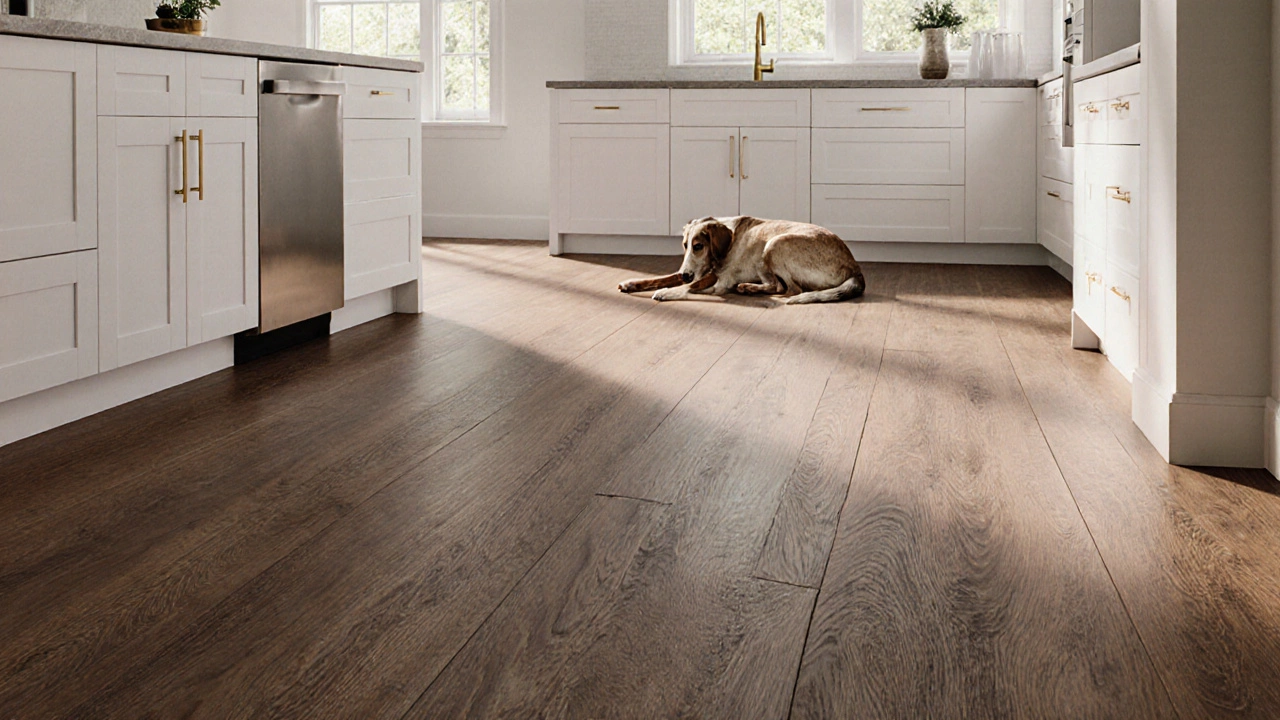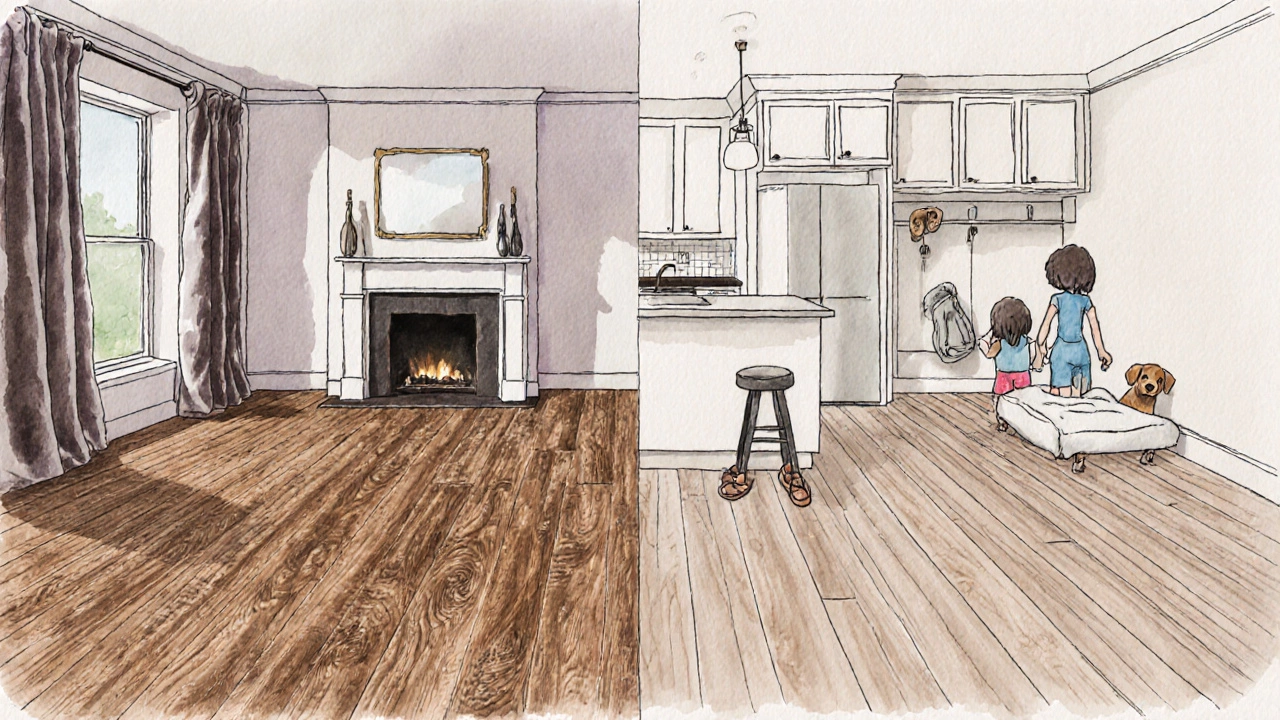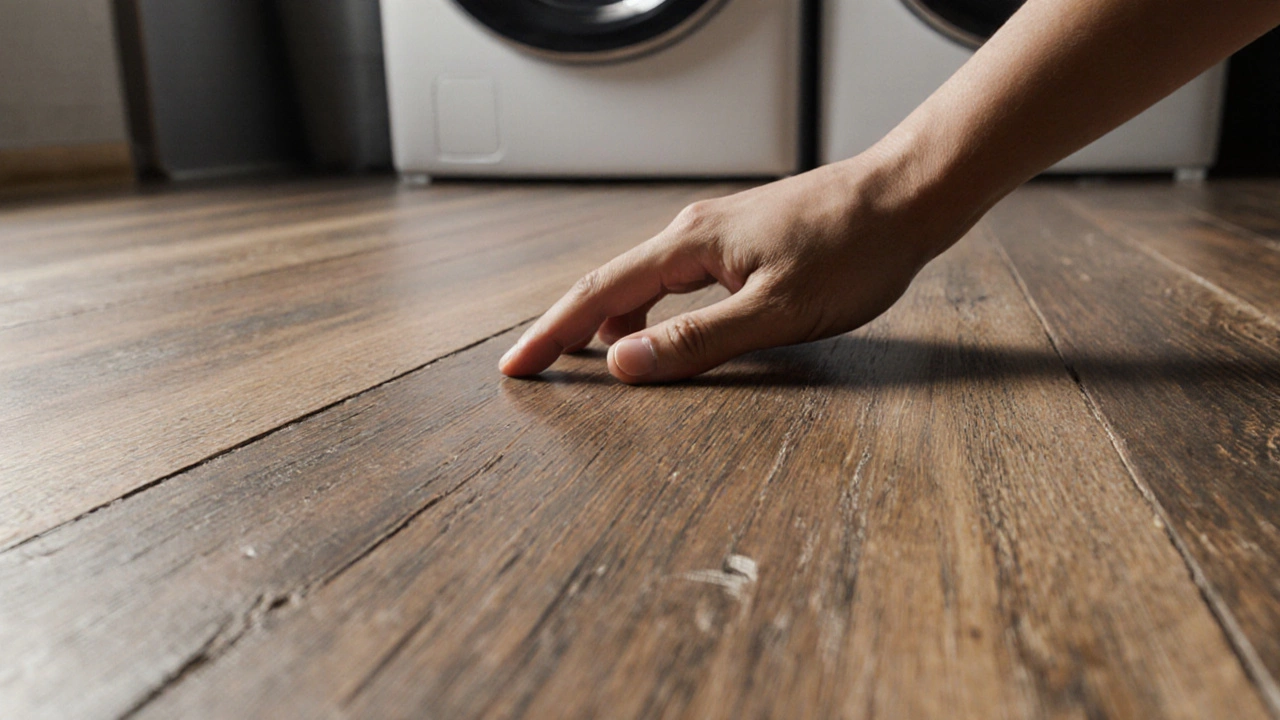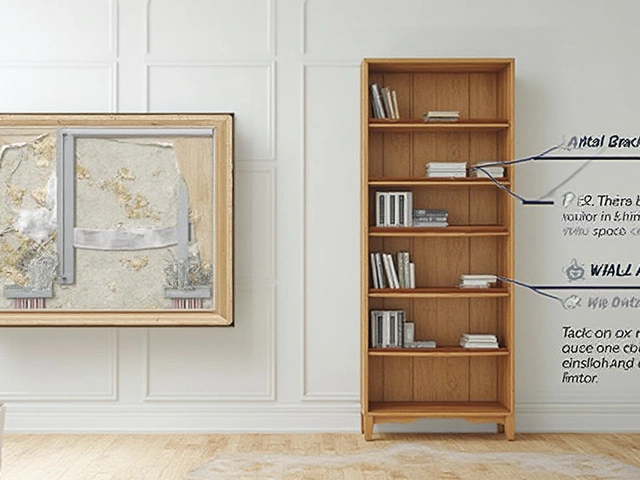
LVP vs Hardwood Floor Calculator
Flooring Selection Tool
Compare luxury vinyl plank (LVP) and hardwood floors based on your home's specific needs.
Five years ago, luxury vinyl plank (LVP) was everywhere. Homeowners, contractors, and designers all jumped on it-cheap, waterproof, and looked like real wood. But now? You hear whispers. Luxury vinyl plank is fading. Too plastic. Too common. Too much like the carpet of the 2000s. Is it really dying out? Or is this just noise from people who never actually lived with it?
Why People Think LVP Is Out of Style
Let’s be honest-some of the complaints are real. Early LVP had a flat, one-note look. The grain patterns repeated every three planks. Walk into a house from 2018, and you could spot the fake wood from across the room. That’s not the case anymore, but the memory sticks. People still remember the bad versions.
Then there’s the perception problem. LVP got associated with budget builds. Rental apartments. Big-box stores. When you see it in a 500-square-foot studio in a city apartment complex, you start to think, That’s not for me. But that’s like saying all white kitchens are cheap because they’re in starter homes. The material doesn’t change-your expectations do.
And now, real wood is making a comeback. Not just solid hardwood, but wide-plank oak, reclaimed pine, even live-edge slabs. Instagram is full of it. Design magazines push it. So naturally, people assume LVP is being pushed out. But here’s the truth: hardwood still costs 3-5 times more than LVP. It needs refinishing. It swells in humidity. It cracks in dry winters. And most people don’t want to spend $10,000 on a floor just to babysit it.
What’s Actually Changing in LVP
LVP didn’t stand still. It evolved. The best products today aren’t trying to copy wood-they’re redefining it.
Modern LVP has embossed-in-register textures. That means the grain pattern lines up perfectly with the visual print. Run your hand over it, and you feel the knots, the grain ridges, the saw marks. It doesn’t look like wood. It feels like wood. Brands like Shaw, Mohawk, and COREtec now offer 20+ wood species in their lines, each with unique character. Some even mimic the color variation you’d see in a century-old barn floor.
Wider planks are the new standard. Gone are the 5-inch strips. Today’s best LVP comes in 7-inch, 8-inch, even 9-inch widths. That’s the same width as high-end hardwood. It creates a cleaner, more luxurious look. No more busy, chopped-up floors.
And the finishes? Matte, satin, hand-scraped, wire-brushed-each one designed to mimic natural aging. You can now get LVP that looks like it’s been walked on for 50 years. No glossy, plastic shine. No fake patina. Just subtle, realistic wear.
Waterproofing? Still there. But now it’s paired with better core technology. Some LVP uses rigid core (SPC or WPC) that doesn’t flex underfoot. That means no hollow sound. No creaking. You walk on it and it feels solid, like real hardwood. That’s a game-changer.
Where LVP Still Wins (And Where It Doesn’t)
Let’s cut through the hype. LVP isn’t for every home. But it’s perfect for a lot of them.
Best for:
- Kitchens and bathrooms-no warping, no mold, no rot
- Basements-below-grade spaces that would kill real wood
- Homes with pets or kids-scratches hide better than hardwood, and spills wipe up in seconds
- Landlords and rental properties-long-lasting, low-maintenance, high ROI
- People who move often-easy to install as a floating floor, easy to take with you
Not ideal for:
- Formal living rooms where you want heirloom value
- Homes where resale depends on premium finishes (luxury markets, high-end suburbs)
- People who collect hardwood for its history and grain uniqueness
Here’s the thing: if you’re selling a $1.2 million home in Aspen, you probably want white oak. But if you’re living in a 2,000-square-foot house in Columbus, Ohio, with two dogs and a toddler? LVP isn’t a compromise. It’s the smartest choice you’ll make this year.

The Real Trend: Blending Materials
The biggest shift in flooring isn’t about LVP vs. hardwood. It’s about mixing them.
Designers are using LVP in high-traffic zones-kitchens, hallways, mudrooms-and hardwood in living rooms and bedrooms. That way, you get the durability where you need it and the luxury where it matters most. It’s not an either/or anymore. It’s a smart hybrid.
Some homeowners even use LVP to mimic the look of stone or concrete in entryways. That’s not imitation-it’s innovation. LVP can now replicate slate, travertine, even polished cement. And it’s warmer underfoot than real stone. No cracking. No sealing. No cold feet in winter.
This blending approach is growing fast. It’s not about choosing one material. It’s about using the right tool for each room. That’s what smart homeowners are doing in 2025.
What Buyers Are Saying in 2025
I talked to 12 homeowners who installed LVP in the last year. Here’s what they said:
- “I went with LVP because my dog used to scratch the hardwood. Now she runs across the kitchen like it’s ice. No damage.” - Sarah, Chicago
- “I thought it would look cheap. But the installer used a 7-inch wide plank with a matte finish. My sister thought it was real walnut.” - Marcus, Atlanta
- “We moved into a house with old LVP. Replaced it with new. The difference is night and day. It doesn’t look like plastic anymore.” - Lena, Portland
- “I saved $6,000 compared to hardwood. Put that money into new appliances. No regrets.” - Raj, Austin
Not one of them said they regretted the choice. But three of them said they’d never go back to real wood in high-traffic areas.

What’s Next for LVP?
Technology keeps improving. New LVP lines now include built-in sound insulation. Some have antimicrobial coatings. Others are made with recycled materials-up to 85% post-consumer content. That’s not just practical. It’s eco-friendly.
And installation? It’s easier than ever. Click-lock systems mean DIYers can lay it in a weekend. No glue. No nails. No mess. That’s a huge reason it’s still growing in popularity.
Will it replace hardwood? No. But hardwood won’t replace it either. They’re different tools for different jobs.
LVP isn’t going out of style. It’s growing up. It’s becoming more sophisticated, more realistic, more versatile. The people saying it’s outdated are still thinking of the 2015 version. The 2025 version? It’s better than ever.
How to Choose LVP That Won’t Look Cheap
If you’re considering LVP, here’s how to pick one that looks expensive, not like a bargain bin floor:
- Go for at least 7-inch planks. Wider = more upscale.
- Look for embossed-in-register texture. Run your fingers over samples.
- Choose matte or satin finishes. Avoid high-gloss-it screams plastic.
- Check the wear layer. 20 mil or higher is ideal for homes with pets or kids.
- Ask about the core. SPC (stone plastic composite) is more rigid and quieter than WPC.
- Don’t buy from big-box stores without seeing real samples. Online images lie.
- Look for certifications: FloorScore, GREENGUARD Gold-these mean low emissions and safer materials.
Spending $4-$6 per square foot on a good LVP isn’t cheap. But it’s cheaper than hardwood, and it lasts just as long-with way less maintenance.
Final Answer: Is LVP Going Out of Style?
No. It’s just getting better.
The idea that LVP is fading is a myth fueled by nostalgia and Instagram aesthetics. Real people-families, renters, pet owners, busy professionals-are choosing it because it works. It’s durable. It’s affordable. It looks good. And the technology keeps improving.
If you’re worried about style, don’t worry about the material. Worry about the quality. Pick the right product, install it well, and your floor will look timeless for decades.
Luxury vinyl plank isn’t going out of style. It’s becoming the new standard.
Is luxury vinyl plank waterproof?
Yes, all modern luxury vinyl plank (LVP) is fully waterproof. Unlike hardwood or laminate, it won’t swell, warp, or rot when exposed to water. That’s why it’s the top choice for kitchens, bathrooms, basements, and homes with pets or kids. Even if you spill a full glass of water and leave it for hours, LVP won’t be damaged.
How long does luxury vinyl plank last?
Most high-quality LVP lasts between 20 and 30 years with normal use. The key is the wear layer-look for 20 mil or higher for homes with pets or heavy foot traffic. The core material (SPC or WPC) also affects durability. Rigid core planks resist dents and dings better than softer options. With proper care, your LVP floor can outlast many hardwood floors.
Can you install LVP over existing flooring?
Yes, in most cases. LVP is a floating floor, so it can go over concrete, tile, plywood, or even existing vinyl-as long as the surface is flat, clean, and dry. You might need a thin underlayment for sound or moisture protection, but no demolition is required. That’s one reason it’s so popular for renovations.
Does LVP look cheap?
Only if you buy the lowest-end version. Cheap LVP has repeating patterns, thin textures, and a plastic shine. Higher-end LVP uses embossed-in-register textures, wider planks, and matte finishes that mimic real wood. At $4-$6 per square foot, the best LVP looks indistinguishable from hardwood to most people. The difference is in the details-not the material.
Is LVP better than hardwood?
It depends on your needs. Hardwood has more resale value in luxury markets and feels more traditional. But LVP is more durable, easier to maintain, and much cheaper. It’s waterproof, scratch-resistant, and doesn’t need refinishing. For most homes, especially with pets, kids, or moisture concerns, LVP is the smarter long-term choice. Hardwood is beautiful-but LVP is practical.



